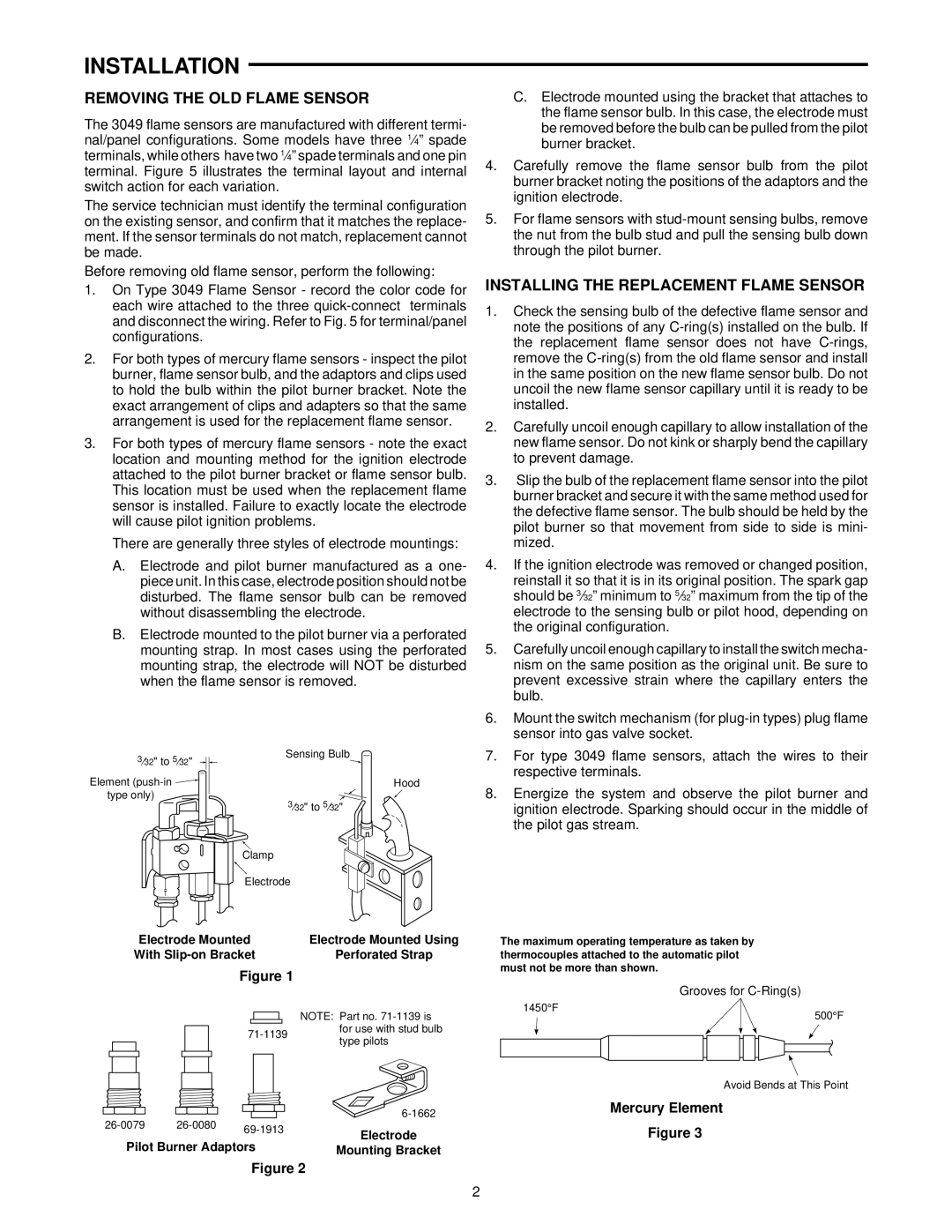3098, 3049 specifications
The White Rodgers 3049 and 3098 series are advanced thermostat models designed for residential and commercial heating and cooling systems. These devices stand out for their user-friendly interfaces, energy-saving features, and robust performance, making them popular choices among homeowners and HVAC professionals alike.One of the major features of both models is their digital display, which provides clear visibility of temperature settings and system statuses. The intuitive menus allow users to easily navigate settings for optimal comfort and efficiency. The backlit display further enhances usability, especially in low-light conditions.
Both the 3049 and 3098 models incorporate programmable scheduling capabilities, allowing users to set specific temperature preferences for different times of the day or week. This feature not only enhances comfort but also contributes to energy savings by reducing heating and cooling when the home is unoccupied. The ease of programming, coupled with the ability to override schedules temporarily, positions these thermostats as top choices for modern homes.
In terms of technology, the White Rodgers 3049 and 3098 deploy advanced algorithms for precise temperature control. They feature adaptive recovery, which learns how long it takes to heat or cool a space, ensuring that the desired temperature is reached by the programmed time. This leads to more efficient energy usage while maintaining comfort.
One distinguishing characteristic of these models is their compatibility with a wide range of heating and cooling systems, including gas, oil, and electric systems. They support both single-stage and multi-stage systems, allowing for flexibility in various home setups. Additionally, their robust construction ensures longevity, making them a wise investment for homeowners.
Another notable feature of the White Rodgers 3049 and 3098 is their ability to integrate with smart home systems. They can be connected to Wi-Fi networks, enabling remote access and control through mobile apps. This integration permits users to monitor and adjust their home’s heating and cooling systems from anywhere, further enhancing comfort and energy efficiency.
The White Rodgers 3049 and 3098 series represents a blend of functionality, technology, and ease of use, making them suitable for a variety of applications. Whether seeking simple temperature control or advanced energy-saving features, these thermostats fulfill diverse heating and cooling needs in today's smart homes.

